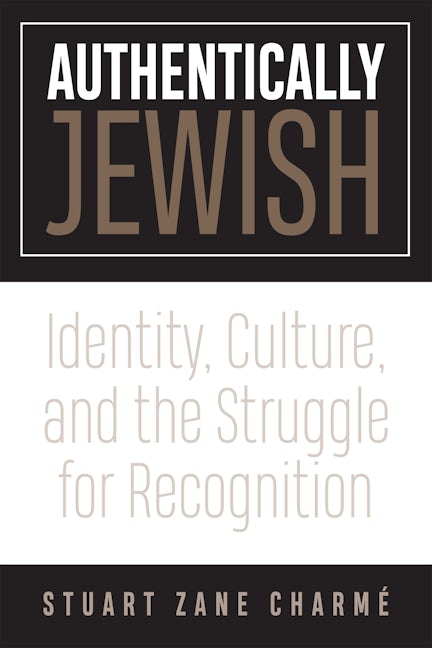This book analyzes the different conceptions of authenticity that are behind conflicts over who and what should be recognized as authentically Jewish. Although the concept of authenticity has been around for several centuries, it became a central focus for Jews since existentialist Jean-Paul Sartre raised the question in the 1940s. Building on the work of Sartre, later Jewish thinkers, philosophers, anthropologists, and cultural theorists, the book offers a model of Jewish authenticity that seeks to balance history and tradition, creative freedom and innovation, and the importance of recognition among different groups within an increasingly multicultural Jewish community.
Author Stuart Z. Charmé explores how debates over authenticity and struggles for recognition are a key to understanding a wide range of controversies between Orthodox and liberal Jews, Zionist and diaspora Jews, white Jews and Jews of color, as well as the status of intermarried and messianic Jews, and the impact of Jewish genetics. In addition, it discusses how and when various cultural practices and traditions such as klezmer music, Israeli folk dance, Jewish yoga and meditation, and others are recognized as authentically Jewish, or not.
Introduction
Part 1: Theoretical Perspectives on Jewish Authenticity
Chapter 1: The Changing Faces of Jewish Authenticity
Chapter 2: Recognition and Authenticity: From Sartre to Multiculturalism
Part 2: Authentically Jewish Religion
Chapter 3: Orthodoxy and the Authentic Jew
Chapter 4: Reforming Tradition and the Spiritual Quest
Chapter 5: Authentic Experience and Spirituality: Meditation, Yoga, Kabbalah
Chapter 6: The Messianic Heresy and the Struggle for Authenticity
Part 3: Authentic Jewish Peoplehood
Chapter 7: Creating Authentic Jewish Culture in Israel
Chapter 8: Shtetl Authenticity: From “Fiddler” to the Revival of Klezmer
Chapter 9: Becoming Jewish: Intermarriage and Conversion
Chapter 10: Authentically Jewish Genes
Part 4: Struggles for Recognition and Authentication
Chapter 11: Lost Jewish Tribes in Ethiopia
Chapter 12: Black Jews in the United States
Chapter 13: Crypto-Jews of the Southwest
Chapter 14: Newly-Found Jews and the Regimes of Recognition
Conclusion
Bibliography
About the Author










